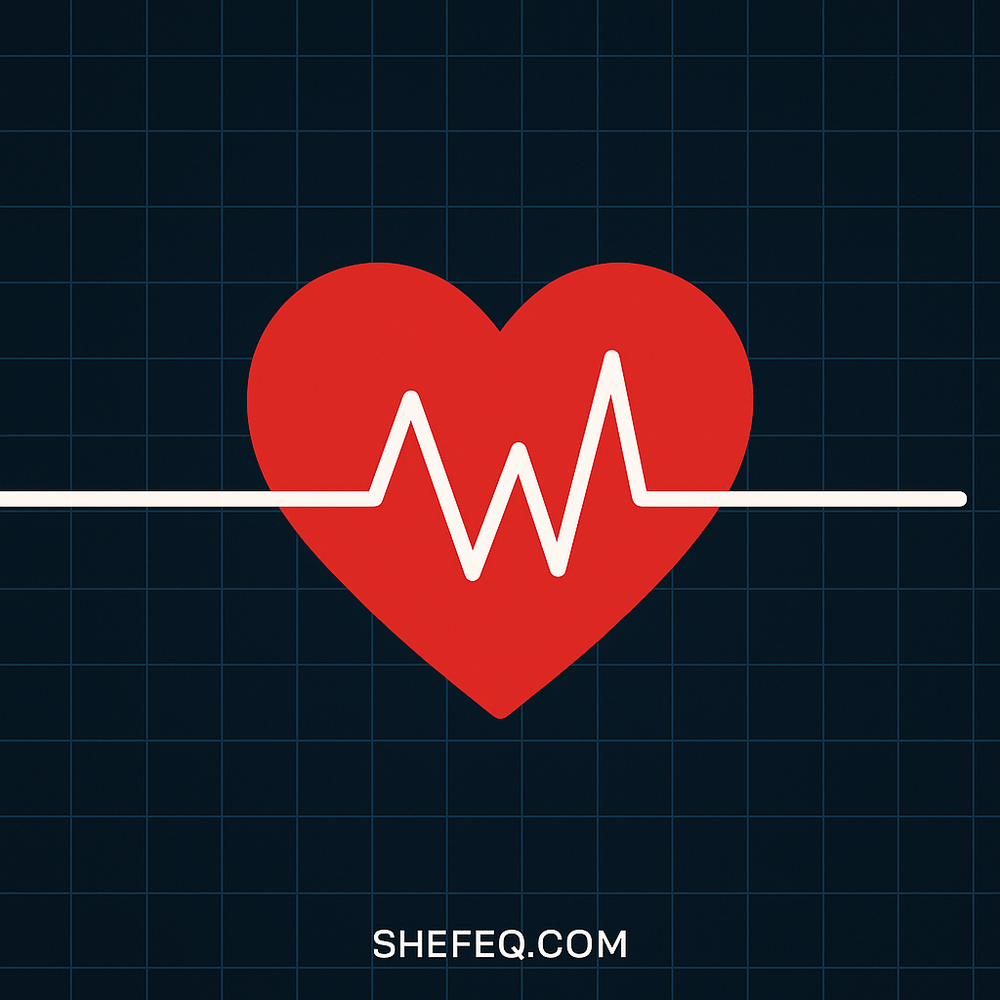I. Introduction: The Unceasing Pulse of the Heart
The heart is the tirelessly working engine of the human body. Its rhythmic beats are essential for life. However, sometimes this rhythm can be disrupted, leading to sudden discomfort, fear, or fatigue. This condition is commonly known as “arrhythmia.” But what causes these irregularities, what symptoms should be observed, and what actions should be taken? In this article, we will explore the medical, preventive, and psychological aspects of heart rhythm disorders in detail.
II. What Should a Normal Heart Rhythm Be?
In a healthy individual at rest, the heart beats between 60–100 times per minute. This rhythm is regulated by an electrical impulse center called the sinus node. This system adjusts the heart rate based on the body’s needs—speeding it up during activity and slowing it during rest. When this balance is disrupted, it leads to arrhythmia.
III. What is Arrhythmia?
Arrhythmia is an irregular heartbeat caused by abnormalities in the heart’s electrical signals. Common types include:
-
Bradyarrhythmia – Slow heart rate (under 60 bpm)
-
Tachyarrhythmia – Fast heart rate (over 100 bpm)
-
Fibrillation – Irregular, chaotic beating or quivering
-
Extrasystole – Premature heartbeats
IV. Symptoms of Arrhythmia
Many arrhythmias may occur silently, without symptoms. However, when present, symptoms may include:
-
Shortness of breath
-
Chest discomfort
-
Fatigue or dizziness
-
Sudden fear, excessive sweating
-
Irregular pulse
-
Fainting or near-fainting
V. Causes of Arrhythmia
Common factors that can trigger arrhythmia include:
-
High blood pressure
-
Coronary artery disease
-
Thyroid disorders
-
Electrolyte imbalances (potassium, sodium)
-
Structural heart abnormalities
-
Stress, panic attacks, depression
-
Smoking, alcohol, caffeine
VI. What to Do in Case of Arrhythmia
If you suspect an arrhythmia, do not panic. Take these steps:
-
Rest: Sit or lie down and breathe deeply
-
Breathing techniques: Inhale through the nose, exhale slowly through the mouth
-
Valsalva maneuver: Pinch the nose, hold the breath, and try to exhale forcibly
-
Call emergency services: Especially if there is chest pain or loss of consciousness
VII. Diagnosis and Medical Evaluation
To accurately diagnose arrhythmia, doctors may use:
-
ECG (Electrocardiogram): Records electrical activity of the heart
-
Holter monitor: Continuous ECG over 24–48 hours
-
Echocardiogram: Examines heart structure and function
-
Blood tests: Evaluate electrolytes, hormones, enzymes
VIII. Treatment Options
Treatment depends on the type, severity, and underlying cause of the arrhythmia:
-
Medication: Beta-blockers, calcium channel blockers, antiarrhythmic drugs
-
Electrical cardioversion: Electric shock to restore rhythm
-
Catheter ablation: Destroys abnormal electrical focus
-
Pacemaker: Implanted to regulate slow heartbeat
IX. Diet and Lifestyle
Helpful lifestyle changes include:
-
Reducing salt, sugar, and saturated fats
-
Eating foods rich in potassium and magnesium (bananas, spinach, dried fruits)
-
Limiting caffeine, alcohol, and quitting smoking
-
Maintaining a sleep routine and managing stress
-
Light daily exercise such as walking or yoga
X. Psychological Impact and Stress-Related Arrhythmia
Psychological triggers play a major role in many arrhythmia cases. Panic attacks, chronic anxiety, and stress can all lead to irregular heartbeats. Breathing exercises, psychotherapy, and stress management are effective in these cases.
XI. Conclusion: The Heart’s Rhythm is Life’s Rhythm
A disturbed heart rhythm can be frightening, but with timely observation, proper treatment, and small lifestyle changes, it can be managed effectively. Always listen to the signals your body is sending you.
Question for you: Have you ever felt your pulse beating irregularly? What triggered it, and what did you do about it? Share your experience with us.

